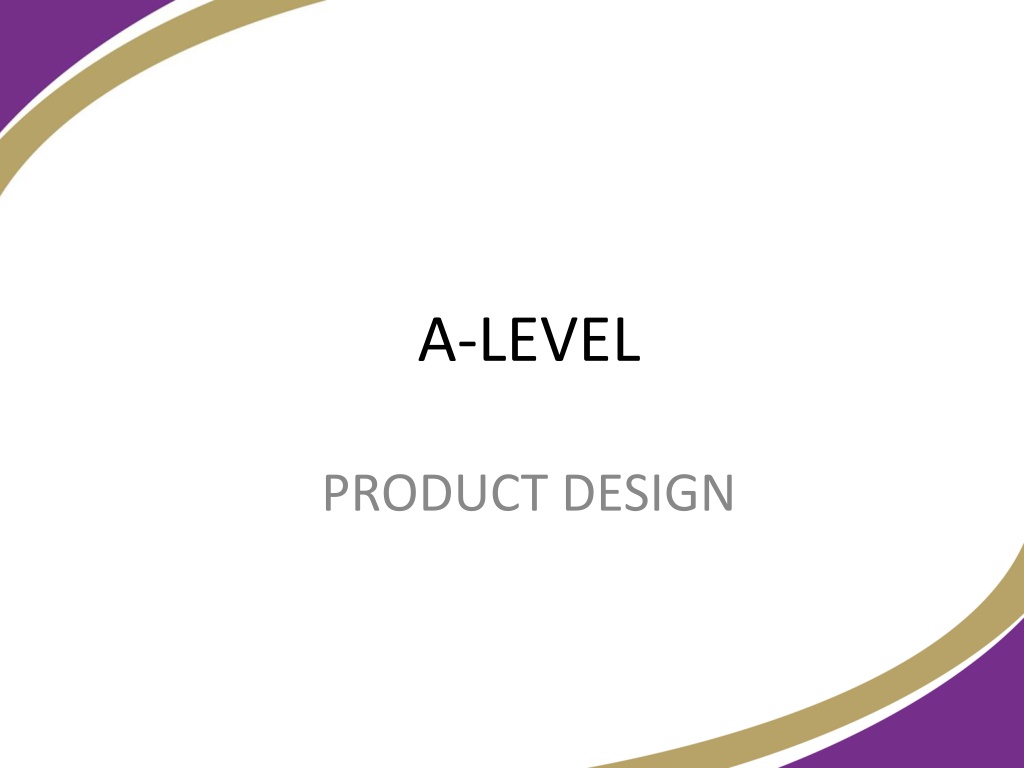Exploring A-Level Product Design: Career Paths, Curriculum, and Opportunities
Understanding the field of Product Design involves the process of ideation, creation, and enhancement of various products. This comprehensive overview delves into why choosing Product Design can lead to promising career prospects, the course structure for A-Level students, and the diverse array of industries that require skilled designers and engineers. From Year 12's skills development to Year 13's major projects, this guide provides valuable insights into the world of Product Design education and its real-world applications.
Download Presentation

Please find below an Image/Link to download the presentation.
The content on the website is provided AS IS for your information and personal use only. It may not be sold, licensed, or shared on other websites without obtaining consent from the author. Download presentation by click this link. If you encounter any issues during the download, it is possible that the publisher has removed the file from their server.
E N D
Presentation Transcript
A-LEVEL PRODUCT DESIGN
What is Product Design? Product design is the process by which products are designed and produced. In its basic form it is coming up with new ideas to improve the efficiency or productivity of existing products or the creation of new ones. Developing, planning and producing an outcome. It is the combination of Graphic Products, Resistant Materials and Systems. Allowing you to develop your skills in all areas. It is about designing for life, from the Biro to the IPAD.
Why choose Product Design? Career opportunities. Enjoy the subject at GCSE. Using the extra UCAS points for entry into university.
Careers It is estimated that we will need 100,000 new Designers, STEM Technicians and Engineers every year. Architecture Advertising Teaching Carpentry Set design Landscape / Built environment Furniture Design Automotive design Interior design Product Design Product modelling
Year 12 With students coming from different DT backgrounds Year 12 focuses on building skills and developing knowledge. The year is broken down into mini projects that will focus on the following areas: Health and Safety Working with Resistant and Compliant Materials Mathematics Manufacturing Processes Quality Control and Quality Assurance
Year 13 Major Project Real problem with a real client Design process coursework Modelling Manufactured product Working prototype Development of existing products Ergonomic development: Perfect posture chair 50% of A Level qualification. Coursework and Practical based
A Level Course Structure 50% Major Project Coursework 30% 2 hour exam focusing on Technical principles in both design and making. 20% 1 hour 30 minute exam focusing on specialist principles of design and manufacturing.
Links to other courses Art Business Studies ICT Mathematics Media Studies Physics Psychology























